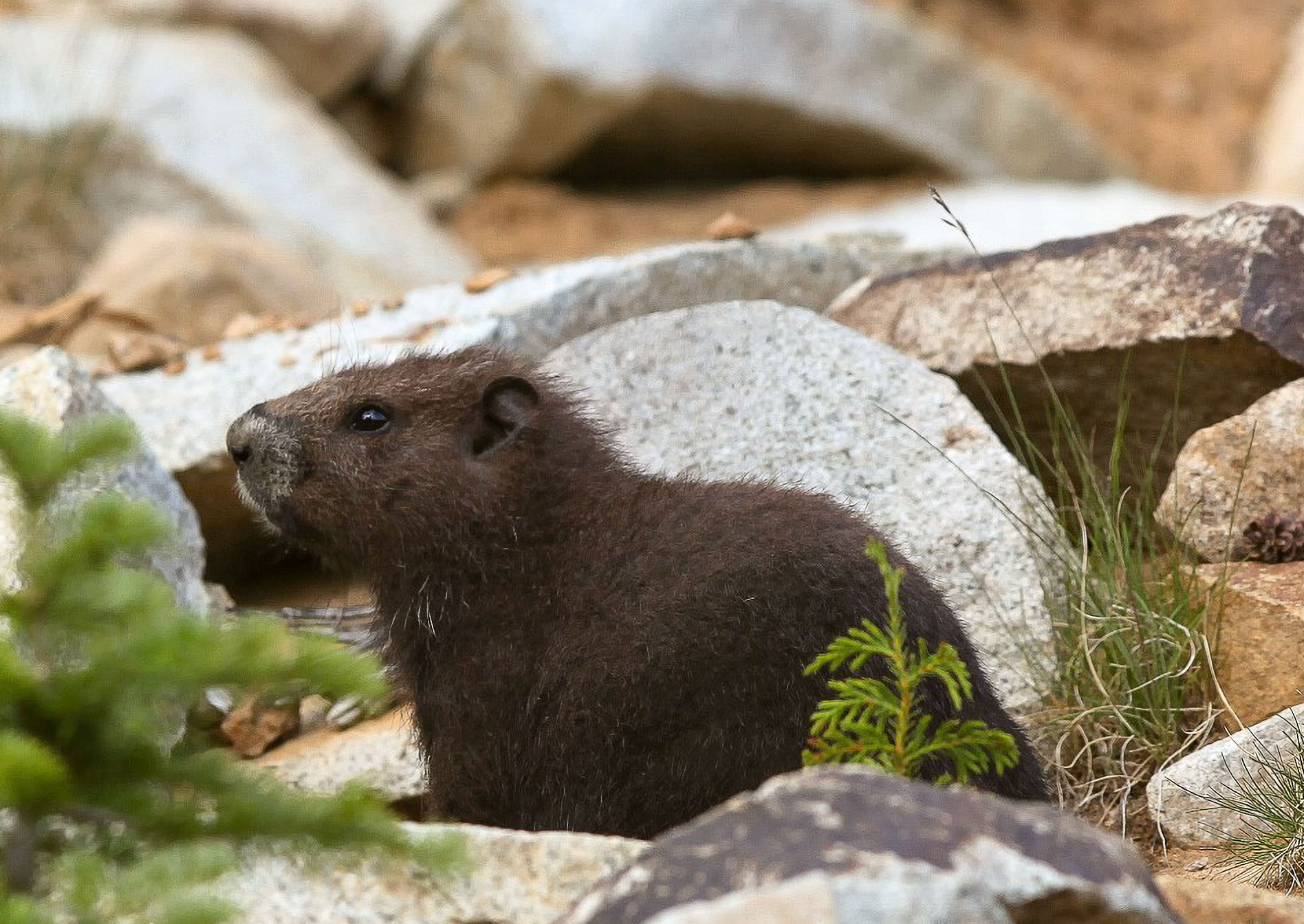
British Columbia
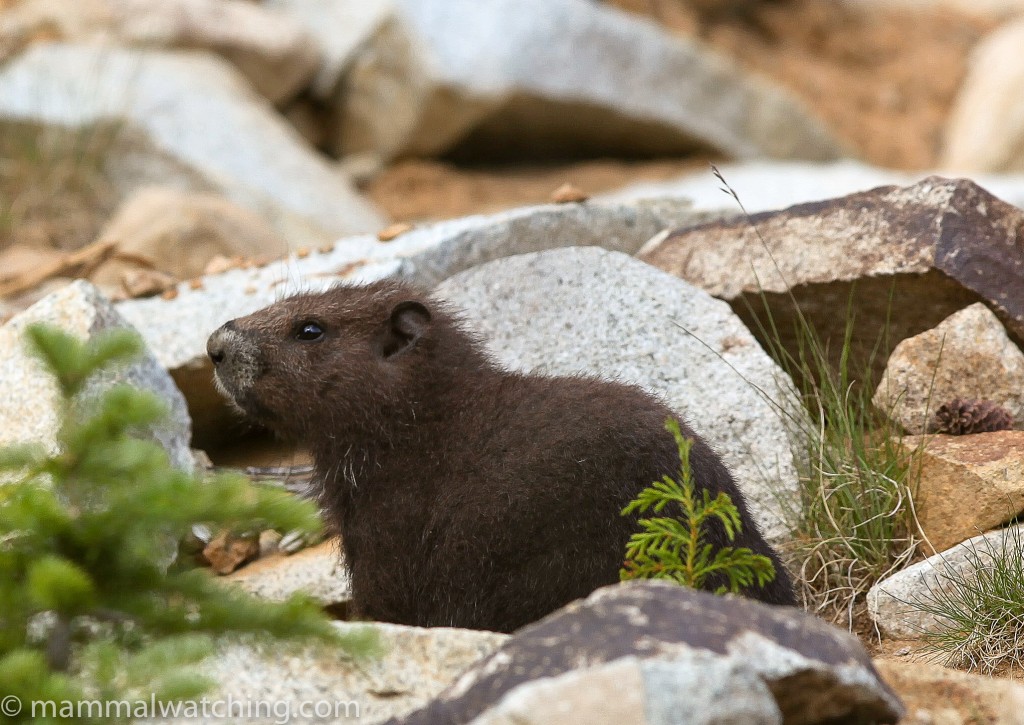
Vancouver Island Marmot, Marmota vancouverensis
Vancouver Island
I can’t claim to have even scratched the surface of British Columbia. But I can claim to have visited Vancouver Island three times. I late May 2006 I spent three nights there, primarily to try to see a Grey (or Gray in the local vernacular) Whale, and returned in August 2010 for a couple of nights to look for the critically endangered Vancouver Island Marmot. I failed and returned in August 2014 for a night and saw one. Grey Whales aside, Vancouver Island has some good mammal watching, and Kim Goldberg’s book Where to see Wildlife on Vancouver Island (Harbour Publishing) has lots of good information on what you can see and where to see it.
Mount Washington
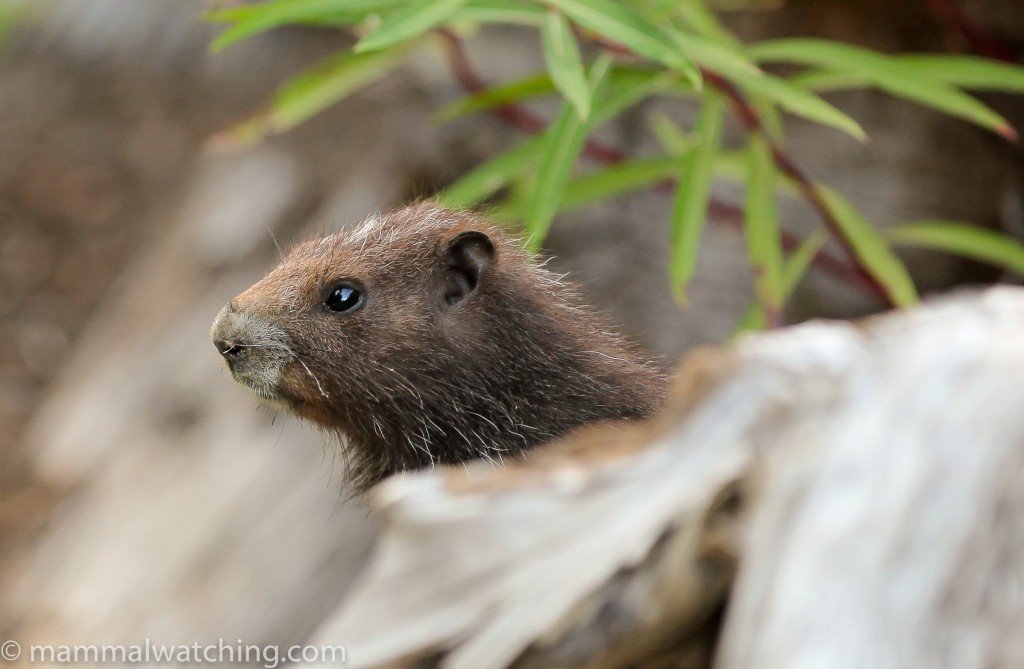
Vancouver Island Marmot, Marmota vancouverensis
Mount Washington is a large ski resort near Courtenay, four hours north of Victoria and at the edge of the Vancouver Island wilderness. Coke Smith visited here in spring 2010 and saw Vancouver Island Marmots easily so I went for a look too.
In August 2010 the hotels at the top were largely empty mid-week and felt like a ghost town in the evening. Most day visitors were mountain bikers. The ski lifts keep running, from 11 a.m. each day, taking tourists to the top on one lift, and mountain bikers to the top on the other. The summit is only 20 minutes from the town of Courtenay and if I went back I would stay in town in cheaper accommodation. I expect the food is better there too. Three of us got food poisoning, presumably from dinner at Fat Teddy’s Grill on the summit. Oh well, after a week in the USA I needed to lose some weight.
Black Bears and Black-tailed Deer are quite common. We saw one bear while spotlighting at the base of the road up the mountain and another in the day distantly from the top of the ski lift. Cougars had been seen recently too.

Spot the Black Bear
But the marmots were elusive. Coke had seen a group at the bottom of one of the ski lifts but it seems that was unusually low and because of heavy snow. The marmots live mainly on the ski runs and seem to be seen most often by people riding the chair lifts. One girl operating the lift said she often saw them about half way up the mountain and we saw several burrows. Other people said they had worked there for years and never seen them (though they had not gone looking). Cold weather and my food poisoning didn’t help my few hours looking. I think I heard one or two whistling, though could not find any.
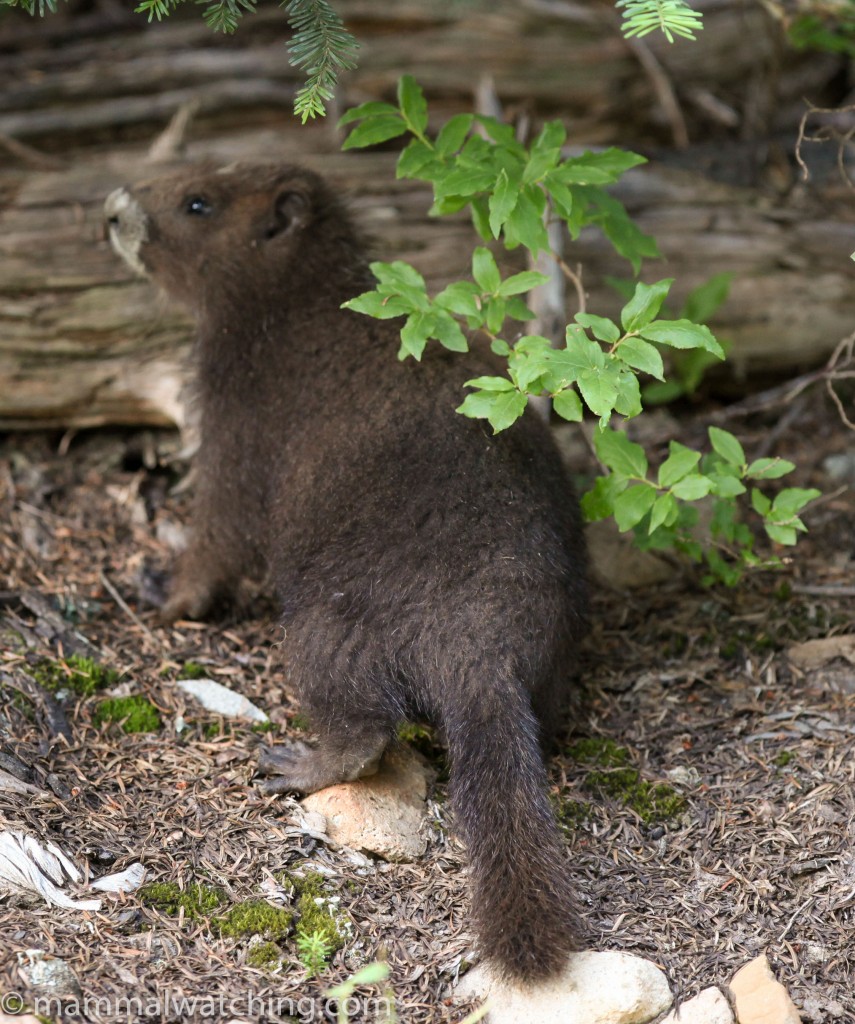
Vancouver Island Marmot, Marmota vancouverensis
In late August 2014 I returned to try again. Last time the weather – and the presence of my kids – was against me. This time it was sunny, I was alone and I was armed with excellent information from Dave Robichaud on where to look. Sure enough I saw several marmots in the late afternoon about half an hour’s walk from the parking lot. Lovely things and not particularly shy.
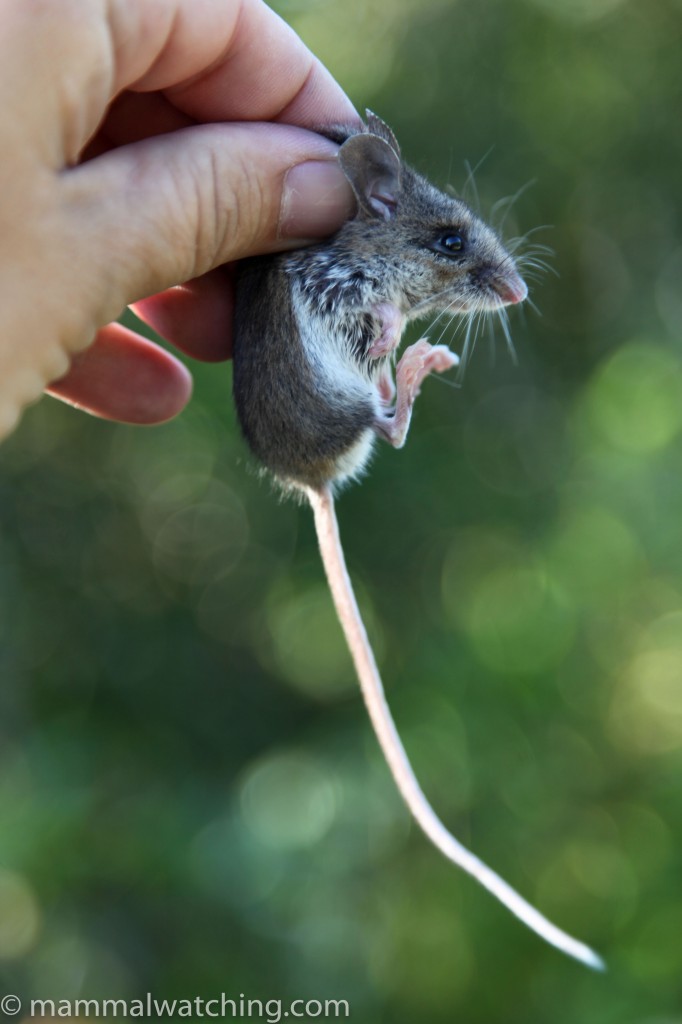
Keen’s Mouse, Peromyscus keeni
I set some traps along a roadside lower down the mountain and caught a bunch of Keen’s Mice overnight.
Nanaimo
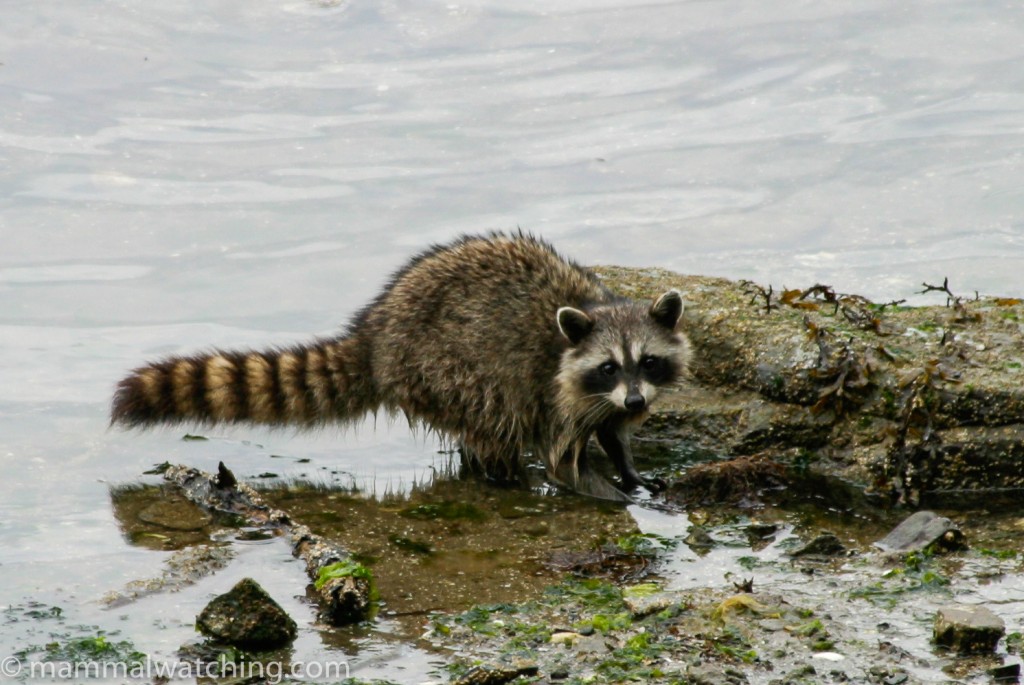
Racoon, Procyon lotor
Nanaimo is quite a good base for checking out some of the better sites in southern Vancouver Island. It is near Green Mountain, which was home to one of the last colonies of the Vancouver Island Marmot and is also a good spot to look for Cougars. Unfortunately, Timber West, the forestry company that owns the logging roads that lead to Green Mountain don’t allow the public access to the site during the week, so I didn’t get up there. But I did see a Red Squirrel and some Black-tailed Deer along the little bit of the road that was open to the public.
Buttertubs Marsh, just a couple of kilometres from downtown Nanaimo, is a popular spot for local birdwatchers, and an excellent place to see Muskrats, Beavers and River Otters (I went there twice and saw all three species both times in the late evening). There are also some feral (introduced) Eastern Cottontails running around. Mink are regular here too, though I didn’t see any.
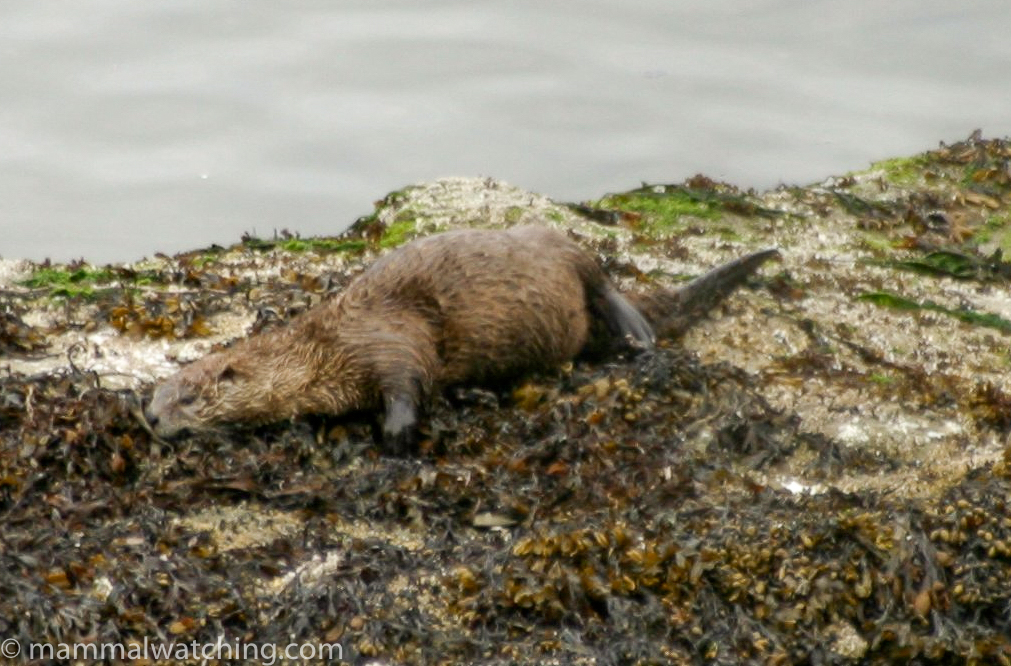
North American River Otter, Lontra canadensis
Newcastle Island is a few hundred metres off of Nanaimo harbour, and a good spot for walking. A coastal trail runs around the island, and in four hours one afternoon I saw a River Otter and lots of Raccoons on the beach, with Harbour Seals offshore.
Tofino
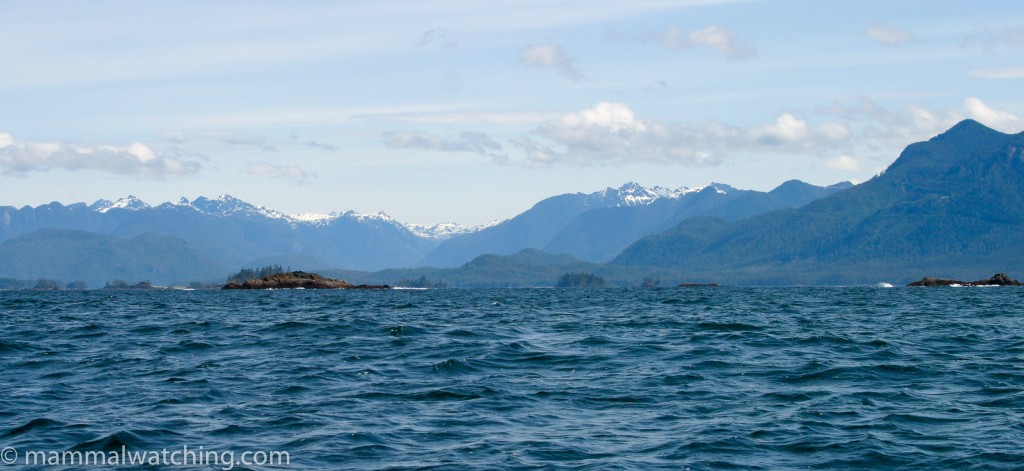
Tofino coastline
Grey Whales pass by Vancouver Island from late February through May each year, and again during December and January, migrating between the Sea of Cortez and Alaska. A few individuals can’t be bothered to go further north and spend the summer off the west coast of the island, around Tofino.
Tofino reminded me a lot of Australia: the scenery, the coastal rainforest, the surfers, the laid back people, even the menu at the sandwich bar, were all very reminiscent of a small Australian coastal resort. So I liked it a lot. Grey Whales were pretty easy to find in May and I took one of the whale watching charters. We saw three individuals, though none particularly well. All three animals were less than 100 metres from shore.
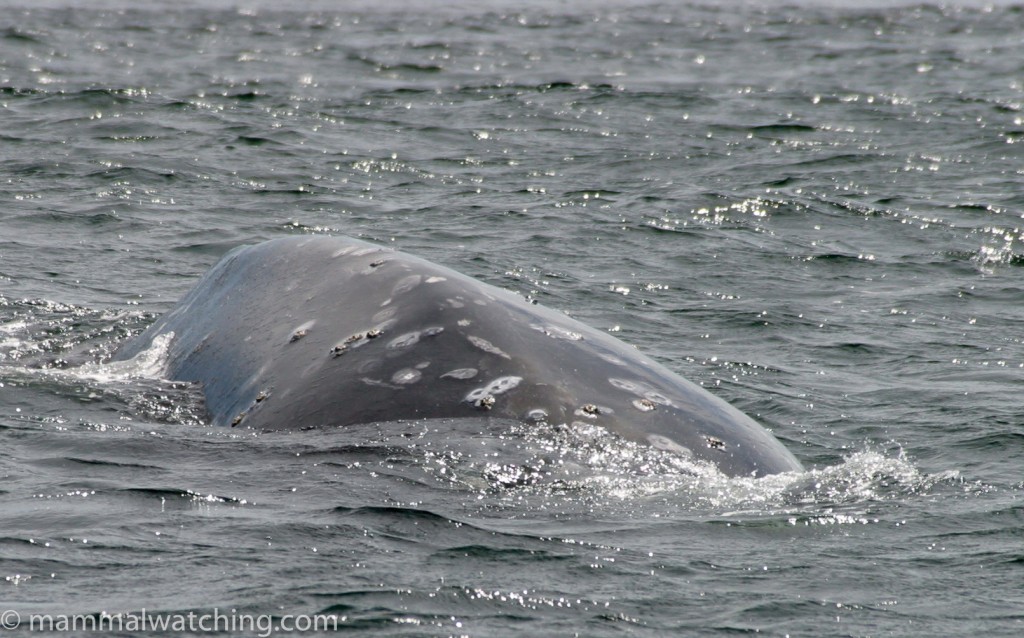
Grey Whale, Eschrichtius robustus
We also saw a mixed group of California and Northern (Steller) Sealions, and some Harbour Seals. Dall’s Porpoise, Humpbacks and Orcas are also often seen on trips.
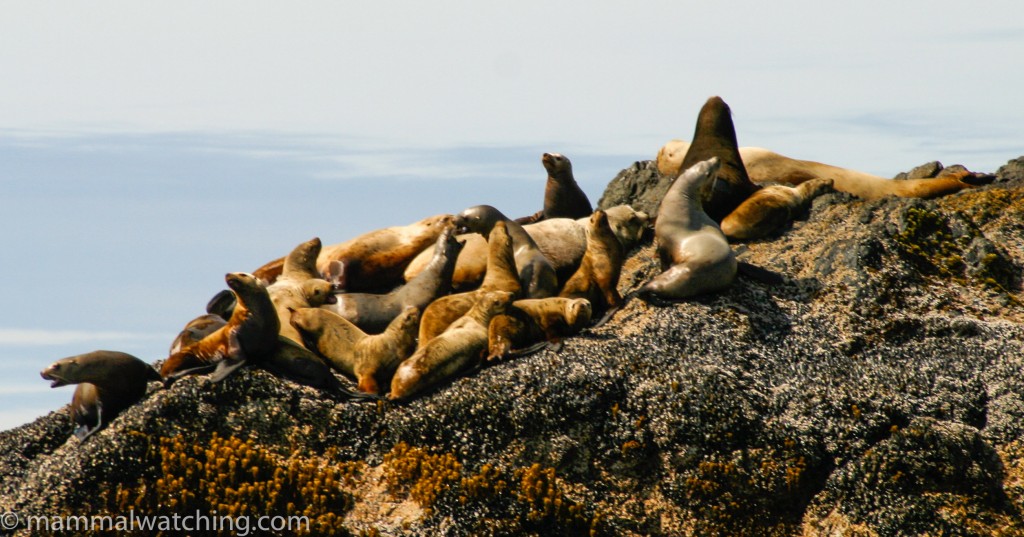
California Sealions, Zalophus californianus & Northern (Steller) Sealions, Eumetopias jubatus
I set a few Elliott traps just outside the Pacific Rim National Park (near the Tofino cemetery) in the rainforest and caught four Western Deer Mice. All four looked similar, and were almost exactly the same body size, but one, with its much longer tail and larger hind foot, was a Keen’s Mouse (Northwest Deer Mouse).
The drive from Nanaimo to Tofino is a pretty one, and I saw a couple of Black Bears along the road in the early evening including this youngster.
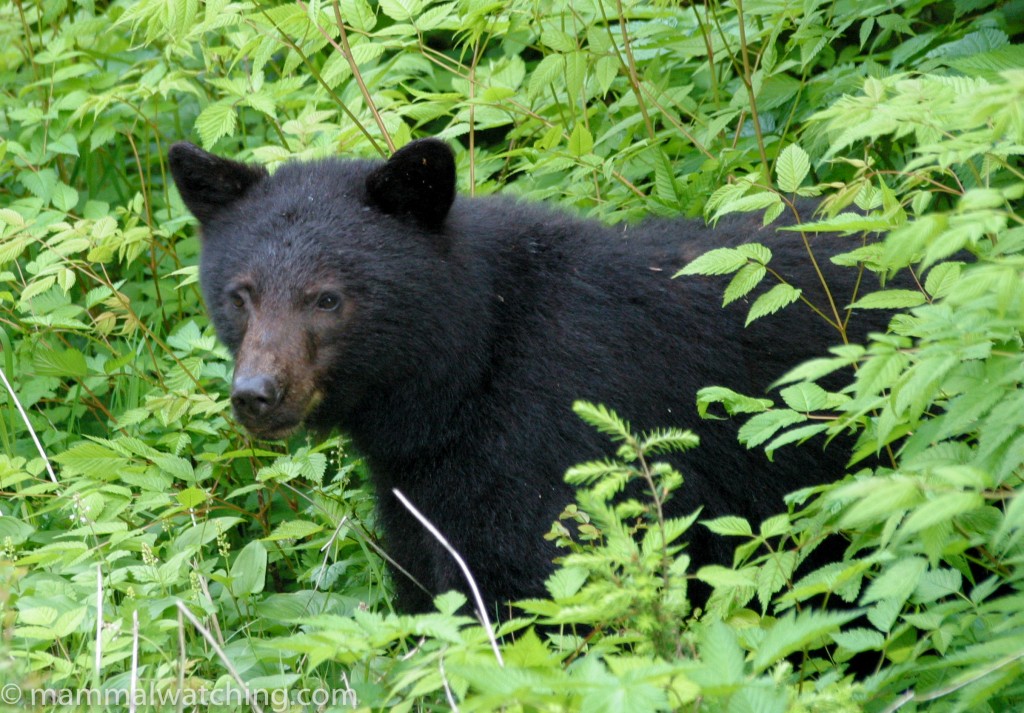
Black Bear, Ursus americanus
Victoria
In 2006 I flew into Victoria, hired a car and took the ferry to Sydney Spit. This is a good spot for River Otters, and twenty minutes after reaching the island I was watching a family of otters lolling around on a sand dune, near the old pier at low tide (this is the pier that’s a few hundred metres from the jetty that the ferry pulls into). Feral Fallow Deer are common on the island. There were Harbour Seals in the ocean on the way to the island and Killer Whales (Orcas) are in the area too.
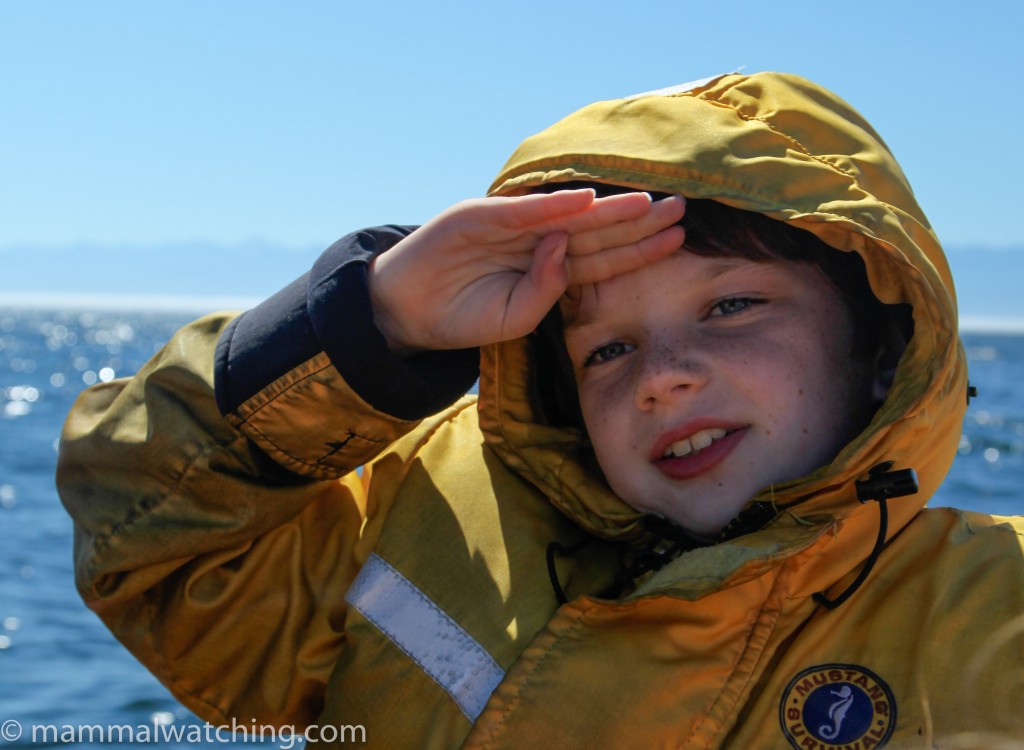
Patrick looks for Killer Whales
I took my kids on an Orca watching trip in 2010 which was a lot of fun, with the Orcas just outside the harbour. My ten year old son was fascinated and they even managed to capture my 6 year daughter’s attention for atlmost ten minutes before she announced it was time to go “zooming again”.
Northern Fur Seals are occasionally reported from Vancouver Island and the skipper said in 6 years he had never seen one, but one had been spotted in the bay the day before. Unfortunately we couldn’t find it. Harbour Seals were common. We didn’t see any Harbour or Dall’s Porpoises though they are regular on these trips.
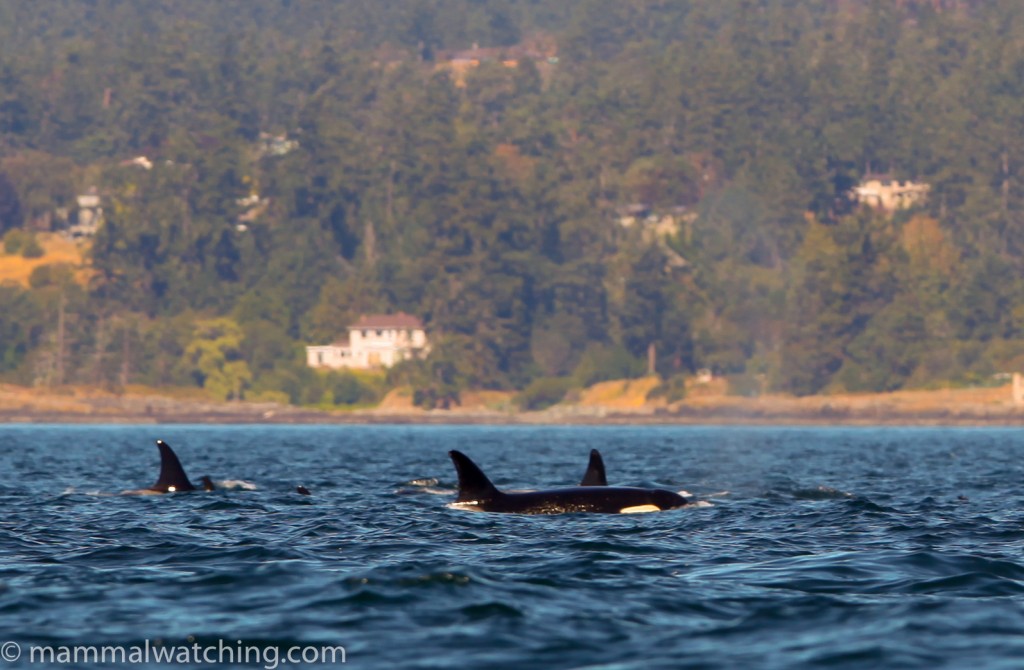
Orcas or Killer Whales, Orcinus orca
Community Reports
Vancouver Island & Okanagan Lake, 2023: Royle Safaris, 19 species including Grey Whale, Dall’s Porpoise and Vancouver Island Marmot.
Vancouver Island and Jasper NP, 2023: Lander, 2 weeks & 21 species including Moose, Southern Red-backed Vole and River Otter.
Vancouver Island & a bit of mainland BC, 2022: Jeff Higdon, 1 week & 21 species including Townsend’s Vole, Grizzly Bear & (a dead) Pacific Marten.
Northern British Columbia & Jasper NP, 2021: Jamie Lamb, 18 days & 24 species including Wood Bison, Stone Sheep and Woodland Caribou.
Pacific Northwest, 2019: Daan Drukker, 3.5 weeks & 40 species including Long-tailed Weasel, Northern Rightwhale Dolphin, and Allen’s Chipmunk. Great report.
Whitehorse – Prince Rupert Sound, 2019: Judy Parrish, 1 week & 12 species including Least Weasel and a Fisher.
Vancouver Island, 2019: Sheelagh Halsey, 2 weeks & 17 species including Vancouver Island Marmot, River Otter, Mink and Grizzly and Black Bears.
Vancouver Island and the Yukon, 2018: Samuel Marlin, 3 weeks & 31 species including Dall’s Sheep, Vancoover Island Marmot, Mink and Wolf.
Vancouver Island Notes, 2016: Nick Waterstraat’s notes on species including Vancouver Island Marmot.
Vancouver Island, Montana and a bit of Wyoming and Washington, 2014: Jon Hall including Pygmy Rabbit and Vancouver Island Marmot.
Vancouver Island, 2012: Tomer Ben-Yehuda, a few days & 9 identified species including Grizzly Bears, Dall’s Porpoise and a Long-tailed Weasel (in the Columbia River Gorge near Portland, Oregon).
Knight’s Inlet, Johnstone Strait and Vancouver Island, 2010: Coke Smith, 9 days & 13 mammals including Vancouver Island Marmots and Martens.
British Columbia, 2008: Michal Polanski, 3 weeks & 16 mammals including a Marten.
Pacific Northwest, 2006: Mark Hows, 2 weeks & 27 species of mammals including a Marten.
Also See
RFI: Vancouver Island, February 2023
RFI: Whale watching off of Vancouver Island April 2018
Vancouver Island Marmot update July 2015
South West BC with tips on Water Shrew and Townsend’s Vole July 2015
Carnivore Watching in Washington or BC? August 2012
Marmothon, 2006: Dave Robichaud’s account of seeing all 6 Marmot species in a calendar year, including Vancouver Island Marmot.
2 Comments
Leave a Reply
You must be logged in to post a comment.


liamragan
Vancouver Island resident and relatively new mammal watcher here, just wanted to quickly weigh in. Super well written report with frankly better luck on many targets than I’ve had. The only thing I wanted to clarify; unless the Northern Fur Seal record you’re talking about is one that flew completely under my radar, I suspect the skipper was mistakenly meaning to refer to Northern Elephant Seal, which breed and pup on the nearby Race Rocks Ecological Reserve and will occasionally come to shore / haul out on one of the local beaches. By comparison, I’m only aware of a single confirmed Fur Seal record for greater Victoria ever back in the 70s.